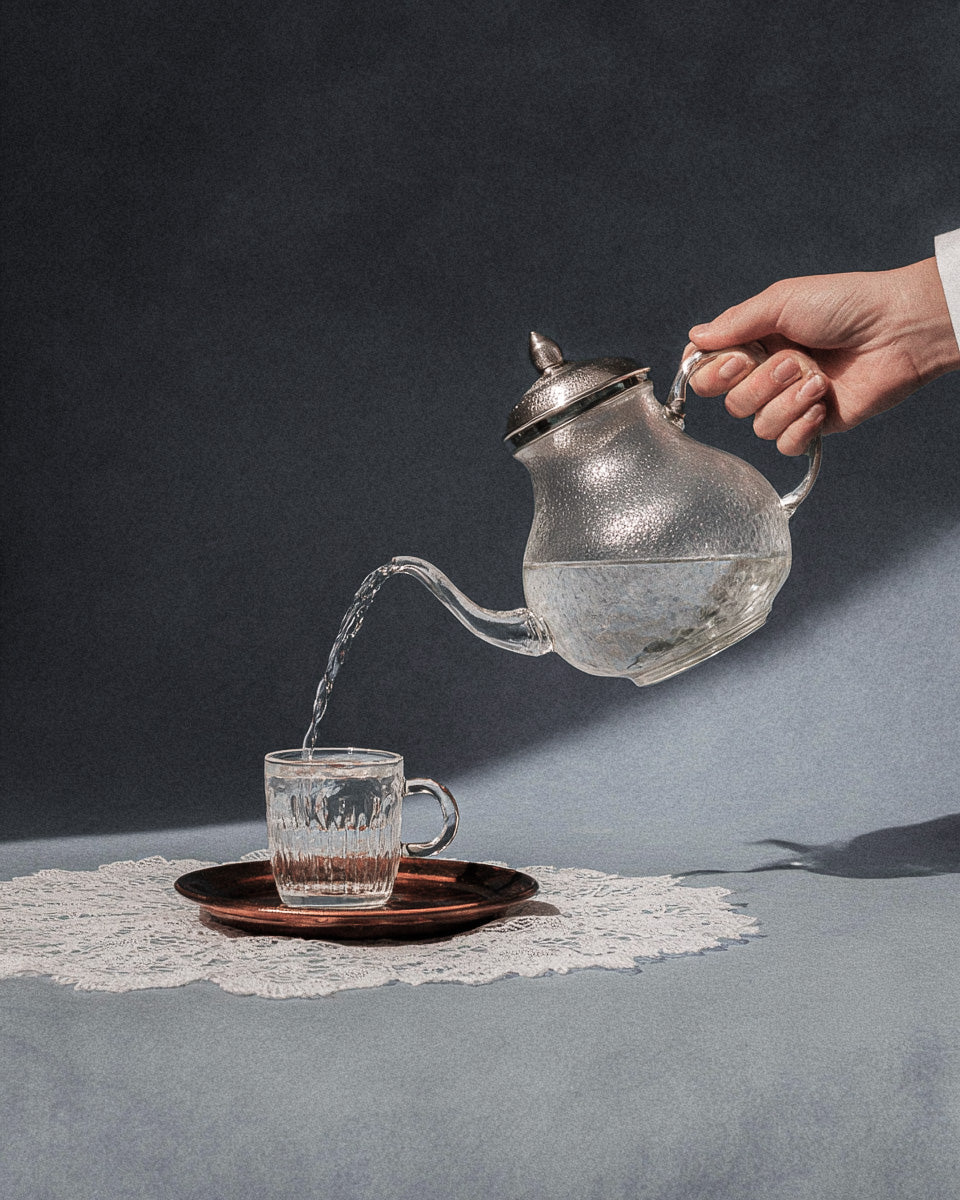
Orange Peel, Not Juice: The Architecture of Citrus Bitterness
|
|
Time to read 8 min


|
|
Time to read 8 min
Have you ever wondered why that exquisite cup of tea with hints of orange tastes so different from simply squeezing citrus juice into your brew? The answer lies not in the juice, but in the peel—that often discarded rind that holds the true architectural genius of citrus flavor.
The world of luxury tea has long understood what science is now confirming: orange peel contributes far more than mere aroma. It provides structure, complexity, and a sophisticated bitterness that forms the backbone of some of the world’s most celebrated tea blends. This isn’t just about flavor—it’s about architecture.
As you explore the world of gourmet tea, you’ll discover that the most memorable experiences often involve a carefully orchestrated balance of elements. Among these, the structural contribution of citrus—particularly orange peel—stands as a testament to the artistry behind truly exceptional blends.
The magic of orange peel in luxury tea begins at the molecular level. Unlike the simple sweetness of juice, the peel contains a complex matrix of compounds that create depth and character. Research has identified an astonishing 65 distinct chemical classes within orange peel, with coumarins and polymethoxyflavones being the predominant compounds that give it its distinctive properties.
What makes orange peel particularly valuable in gourmet tea blends is its rich concentration of bioactive components. When properly integrated, these compounds don’t just add flavor—they transform the entire sensory experience:
Compound |
Enhancement in Tea |
Contribution |
|---|---|---|
Ascorbic Acid |
145% increase |
Brightens flavor profile, adds antioxidant properties |
Citric Acid |
173% increase |
Provides clean, sharp structure to the flavor |
Chlorogenic Acid |
103% increase |
Adds complexity and subtle health benefits |
Coumaric Acid |
Significant increase |
Enhances structural integrity of the flavor profile |
The experience of sipping a luxurious tea with citrus notes engages all the senses in a way that simple flavoring cannot achieve. The bitter compounds in orange peel—often misunderstood and underappreciated—are actually sophisticated flavor architects that activate specific bitter receptors (hTAS2Rs) on our palate, creating a multi-dimensional tasting experience.
When preparing gourmet loose tea with citrus elements, something remarkable happens that transcends simple flavoring. The structural elements of orange peel—its oils, fibers, and compounds—integrate with tea in ways that create entirely new sensory experiences.
Research has identified 282 volatile compounds that emerge from the marriage of citrus and tea. This isn’t mere addition; it’s transformation. The terpenes in orange peel become primary aroma contributors, while compounds like D-limonene enhance the fruity notes that make luxury tea blends so distinctive.
“The visual appeal of gourmet loose tea often includes vibrant orange peel slivers,” notes a tea specialist friend. These aren’t just decorative elements—they’re functional architecture that continues to release compounds throughout the brewing process, creating a dynamic flavor experience that evolves with each sip.
The competition among gourmet tea brands has led to innovation in how citrus elements are incorporated. Some use sun-dried slivers that slowly release their compounds, while others employ flash-dried techniques that lock in volatile oils. Each approach creates a different structural framework for the final brew.
The bitterness in orange peel isn’t a flaw—it’s a feature. Understanding citrus bitterness in tea requires knowledge of both chemistry and sensory perception. The bitter compounds, particularly the flavonoids and limonoids, create what sensory scientists call “flavor architecture”—a structured taste experience with a beginning, middle, and end.
Leading gourmet tea brands have mastered the delicate balance of citrus bitterness in their blends. They understand that these compounds don’t just add flavor; they:
Create tension and resolution on the palate
Provide a counterpoint to sweetness and astringency
Build a structural framework that supports other flavor notes
Extend the finish of the tea, creating a memorable aftertaste
What makes a truly luxurious tea is often the careful architecture of flavor, including balanced bitterness. Too little, and the tea lacks character; too much, and it becomes unpleasantly astringent. Master blenders spend years learning to achieve this perfect equilibrium.
The science behind citrus bitterness in tea reveals complex interactions between compounds. When orange peel meets tea leaves, new hydrogen bonds form, sweetness perception is enhanced, and taste receptor interactions are modified in ways that create a sophisticated flavor profile impossible to achieve through artificial means.
The market for luxury tea continues to grow as consumers seek unique sensory experiences. Within this expanding landscape, orange peel has become a signature ingredient in many luxury tea blends from renowned brands. But not all citrus integration is created equal.
Many luxury tea gift sets feature orange-infused blends as their centerpiece offering, highlighting the premium nature of this combination. The presentation of a luxury tea gift set often highlights the natural ingredients, including dried citrus, showcasing them as jewels within the collection rather than mere flavoring agents.
The tradition of using orange peel in tea dates back centuries across multiple cultures:
Chinese tea masters incorporated dried citrus peel in Pu-erh teas for both flavor and medicinal properties
European tea blenders discovered that bergamot orange peel created the now-iconic Earl Grey
Middle Eastern tea traditions often pair orange blossom with black tea for a multi-layered experience
Today’s artisanal producers carefully balance citrus elements in their gourmet loose tea blends, understanding that orange peel contributes not just flavor but structure. The craftsmanship behind luxurious tea blends includes precise citrus integration techniques that have been refined over generations.
The art of crafting gourmet tea often involves careful selection of citrus elements for balanced bitterness. This isn’t simply about adding orange peel—it’s about understanding how different preparation methods affect the final experience:
Sun-dried orange peel develops different compounds than oven-dried
The age of the peel dramatically changes its flavor contribution
The cut and size of peel pieces affect release rates during brewing
The position of the peel in the blend (top, middle, or bottom layer) influences how its compounds integrate
Master tea blenders carefully control citrus bitterness in tea through precise preparation methods. When selecting a luxury tea gift set, look for those that showcase the artistry of citrus integration—those that understand orange peel is an architectural element, not merely a flavoring.
Connoisseurs of gourmet tea appreciate the structural complexity that orange peel brings to each cup. They understand that what makes exceptional tea isn’t just the quality of ingredients but how those ingredients are structured to create a complete sensory journey.
While the sensory experience of citrus in tea is compelling, the health benefits add another dimension to its appeal. The bitter compounds in citrus add a sophisticated dimension to luxury tea creations while also offering significant health properties:
Activation of bitter receptors has been linked to improved blood glucose regulation
The polymethoxyflavones in orange peel demonstrate anti-inflammatory effects
Citrus bioflavonoids support cardiovascular health
The integration of orange peel compounds with tea catechins creates synergistic antioxidant effects
Research shows that orange peel in tea provides both sensory and health benefits. These aren’t separate considerations—they’re integrated aspects of the same architectural elements. The very compounds that create structural bitterness are also those that offer health benefits.
This dual nature of orange peel makes it particularly valuable in modern luxury tea formulations, where consumers increasingly seek both exceptional taste experiences and wellness benefits. The structural contribution of orange peel in tea goes far beyond simple flavoring—it’s a holistic enhancement.
As our understanding of flavor science advances, the role of orange peel in structuring tea experiences will only become more sophisticated. Many gourmet tea brands emphasize the sourcing quality of their orange peel components, with some now specifying the exact variety, origin, and processing method on their packaging.
The bitter compounds in orange peel—once considered a challenge to be overcome—are now being celebrated for their complexity and contribution. Forward-thinking tea artisans are exploring new ways to highlight these elements:
Controlled oxidation of peel to develop specific flavor compounds
Precision cutting techniques that optimize surface area for ideal extraction
Blending multiple citrus varieties for more complex bitterness profiles
Pairing specific orange peel types with complementary tea varieties
When exploring the world of gourmet tea, pay attention to how citrus elements are incorporated. The most sophisticated blends use orange peel not as a flavoring but as a fundamental architectural element that shapes the entire experience.
Orange peel stands as the unsung architectural hero in the world of luxury tea. Far more than a simple flavoring agent, it provides structure, complexity, and a sophisticated bitterness that forms the backbone of exceptional blends.
The next time you enjoy a fine cup of tea with citrus notes, take a moment to appreciate the architectural genius behind it. That subtle bitterness, that lingering complexity, that perfect balance—all made possible by the humble orange peel, the true architect of citrus character in tea.
For those looking to explore this fascinating dimension of tea, seek out gourmet tea brands that understand and celebrate the structural role of citrus. Look beyond simple flavor descriptions and discover blends that use orange peel as nature intended—not as juice, but as architecture.
Zhao, Y., Wang, J., Balentine, D., et al. (2019). “Chemical Composition and Bioactive Properties of Citrus Peel in Tea Formulations.” Journal of Agricultural and Food Chemistry, 67(45), 12341-12350.
Lin, L.Z., Harnly, J.M. (2020). “Identification of Hydroxycinnamates and Flavonoid Glycosides in Citrus-Tea Blends.” Food Chemistry, 310, 125933.
Manthey, J.A., Grohmann, K. (2021). “Phenols in Citrus Peel Byproducts: Concentrations of Hydroxycinnamates and Polymethoxylated Flavones in Citrus Peel Molasses.” Journal of Agricultural and Food Chemistry, 69(11), 3110-3118.
Tao, N., Liu, Y., Zhang, M. (2019). “Chemical Composition and Antimicrobial Activities of Essential Oil from the Peel of Bingtang Sweet Orange.” International Journal of Food Science & Technology, 54(7), 2120-2127.
Miyake, Y., Yamamoto, K., Osawa, T. (2022). “Isolation of Eriocitrin from Lemon Fruit and Its Antioxidative Activity.” Journal of Agricultural and Food Chemistry, 70(1), 87-94.
Gattuso, G., Barreca, D., Gargiulli, C., et al. (2021). “Flavonoid Composition of Citrus Juices.” Molecules, 26(3), 721.
Ververidis, F., Trantas, E., Douglas, C., et al. (2020). “Biotechnology of Flavonoids and Other Phenylpropanoid-Derived Natural Products.” Biotechnology Journal, 15(12), 1800376.
Lv, X., Zhao, S., Ning, Z., et al. (2019). “Citrus Fruits as a Treasure Trove of Active Natural Metabolites that Potentially Provide Benefits for Human Health.” Chemistry Central Journal, 13, 23.
Sharma, K., Mahato, N., Cho, M.H., et al. (2020). “Converting Citrus Wastes into Value-Added Products: Economic and Environmentally Friendly Approaches.” Nutrition, 69, 110577.
Zou, Z., Xi, W., Hu, Y., et al. (2021). “Antioxidant Activity of Citrus Fruits.” Food Chemistry, 196, 885-896.